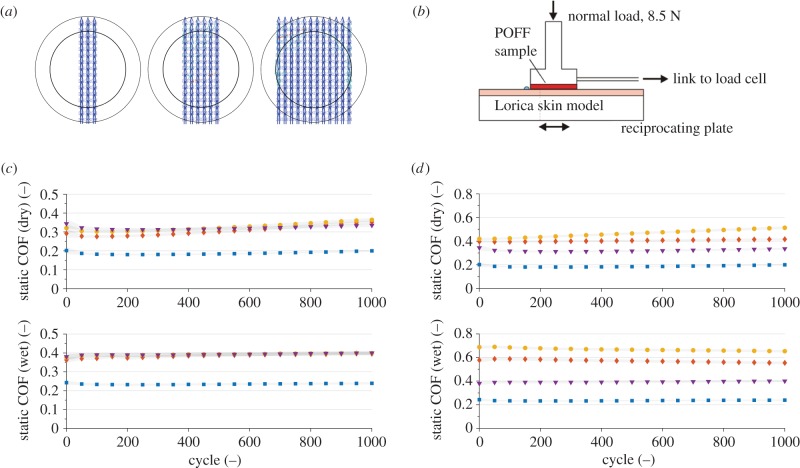Figure 4.
(a) Design for the friction measurements for both optical fibres ID-1144 and ID-1143. The outer circle shows the punched-out area for the friction measurements, the inner circle shows the area in contact with the skin model. (b) Schematic of testing set-up, the POF fabric (POFF) is tested versus a skin model at a normal load of 8.5 N. The coefficient of friction is calculated with the load cell data, adapted from [23] with permission from Elsevier. (c) Static coefficient of friction of fibre ID-1144 in dry (top) and wet (64 µl) (bottom) conditions with varying fibre content on the test patches. Colours/shapes correspond to the following configurations: three embroidered lines (diamonds), six embroidered lines (circles) and 12 embroidered lines (triangles) while the substrate (textile without POFs) as a reference is plotted with squares. (d) Static coefficient of friction of different textiles in dry (top) and wet (64 µl) (bottom) conditions. The following fabrics are compared: decubitus bedsheet (Schoeller) (blue squares), cotton/polyester (50 : 50) (diamonds), cotton (100%) (circles) and the fibre patches with fibre ID-1144 (triangles). (Online version in colour.)

